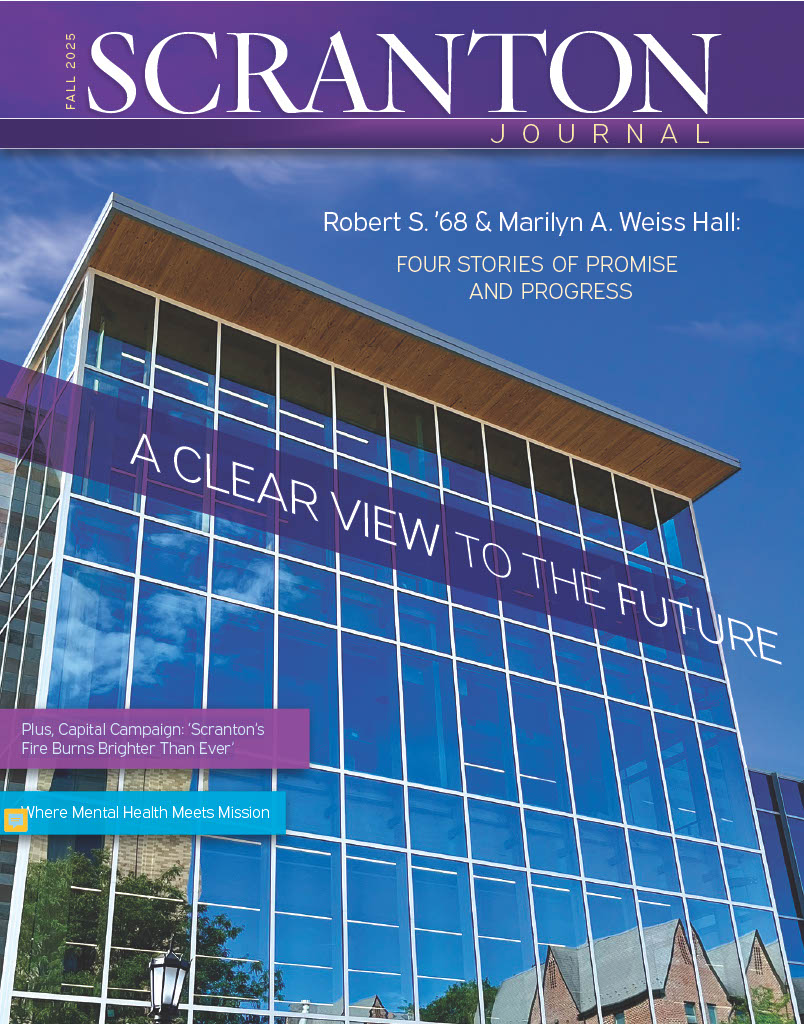Tuesday, Jan. 12 was likely just another day for many on Scranton’s campus.
But, in the Department of Athletics, the news of the day was cause for celebration.
Finally, after 10 months away from the fields of competition, the University announced that it was going to move forward with the Landmark Conference’s decision to play the winter sports of men’s and women’s basketball, along with men’s and women’s swimming and diving.
But, there was one catch: to keep student-athletes, coaches and athletics staff as safe as possible, Scranton would have to complete a rigorous testing program each and every week with each athletic team.
In January, the conference allowed both fall and spring sports to compete. Therefore, the number of teams who had to be tested regularly has ballooned to 15. Nearly every team at the University has had a chance to compete in some way since the beginning of the year.
Testing Challenges
In charge of the testing program for the Royals has been Dave Martin, director of Athletics, Randy Shemanski, associate director of Athletics, and Michael Sweitzer, sports medicine director.
The testing program began with both basketball teams in January, and both the Royals and Lady Royals were tested three times a week, including within 72 hours of competition, as basketball was considered a “high-risk” sport by the NCAA.
“Medium-risk” teams had to be completed on at least 25 percent of a roster every one to two weeks during preseason practices. Once games began, teams traveling who were not able to social distance en route were also tested 72 hours before a competition.
For Shemanski and Sweitzer, the program has brought about different sets of challenges.
“The biggest challenge has been scheduling the tests around the student-athletes’ class and practice schedules while not overwhelming the local lab who is processing the tests for us,” Shemanski said. “That means we’re testing multiple days per week, sometimes as many as four out of five weekdays, and those tests have taken place anywhere from 7:30 a.m. to 9 p.m.”
“With our testing regime, the athletic training staff has been adding even more hours to its schedule due to when the tests had to be performed and at the lab,” Sweitzer said. “But, as the semester has gone forward, we have had to do less testing and have been able to test closer to our normal day-to-day hours which was a welcomed change.”
Doing What They Love
The hard work with testing, however, has paid off for the Royals.
As of press time, only one athletic event has had to be postponed because of either positive COVID cases or contact tracing by all of Scranton’s teams (other competitions have been postponed or canceled because of competing schools having positive cases).
And, almost every Royals athletic team has had some kind of a season, something that early in the fall semester seemed like an impossibility for many. Scranton’s spring teams will conclude their seasons in May, as each will have an opportunity to qualify for the NCAA Division III Championships in their respective sports, as well.
For the Scranton Athletics staff, seeing Royals student-athletes do what they love to do most — compete — has made the long hours worth of COVID testing all worth it.
“The work that we did as a University and a department during the summer and fall really prepared us to have a good process in place for competing this spring,” said Sweitzer. “When I covered my first game of basketball this year, it was the first competition I had covered in almost a full calendar year. It was a great feeling to get back closer to our normal and see our student-athletes do what they love to do. I hope that we can continue to participate safely and work towards getting back to normal seasons and competition in the coming year.”
“Words can’t express how great it has been to see our teams competing again,” Shemanski said. “Everyone has made sacrifices over the past 13 months, and our student-athletes not being able to compete has been one of the biggest.
“To see them back out there doing what they love in a safe environment and competing at a high level has been more than I could have asked for when the academic year started back in August.”


